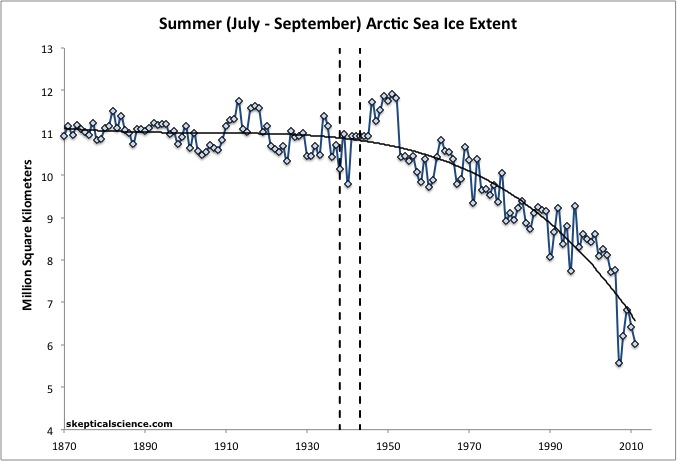NOVEMBER, 1922. MONTHLY WEATHER REVIEW
THE CHANGING ARCTIC.
The Arctic seems to be warming up. Reports from fishermen, seal hunters, and explorers who sail the seas about Spitsbergen and the eastern Arctic, all point to a radical change in climatic conditions, and hitherto unheard-of high temperatures in that part of the earth’s surface.
The oceanographic observations have, however, been even more interesting. Ice conditions were exceptional. In fact, so little ice has never before “been noted.
In connection with Dr. Hoel’s report, it is of interest to note the unusually warm summer in Arctic Norway and the observations of Capt. Martin Ingebrigtsen, who has sailed the eastern Arctic for 54 years past. He says that he first noted warmer conditions in 1918, that since that time it has steadily gotten warmer, and that to-day the Arctic of that region is not recognizable as the same region of 1868 to 1917.
Many old landmarks are so changed as to be unrecognizable- Where formerly great masses of ice were found, there ore now often moraines, accumulations of earth and stones. At many points where glaciers formerly extended far into the sea they have entirely disappeared.
The change in temperature, says Captain Ingebrigtsen, has also brought about great change in the flora and fauna of the Arctic. This summer he sought for white fish in Spitsbergen waters. Formerly great shoals of them were found there. This year he saw none, although he visited all the old fishing grounds.
There were few seal in Spitsbergen waters this year, the catch being far under the average. This, however, did not surprise the captain- He pointed out that formerly the waters about Spitsbergen held an even summer temperature of about 3 Celsius; this year recorded temperatures up to 15, and last winter the ocean did not freeze over even on the north coast of Spitsbergen.
docs.lib.noaa.gov/rescue/mwr/050/mwr-050-11-0589a.pdf




